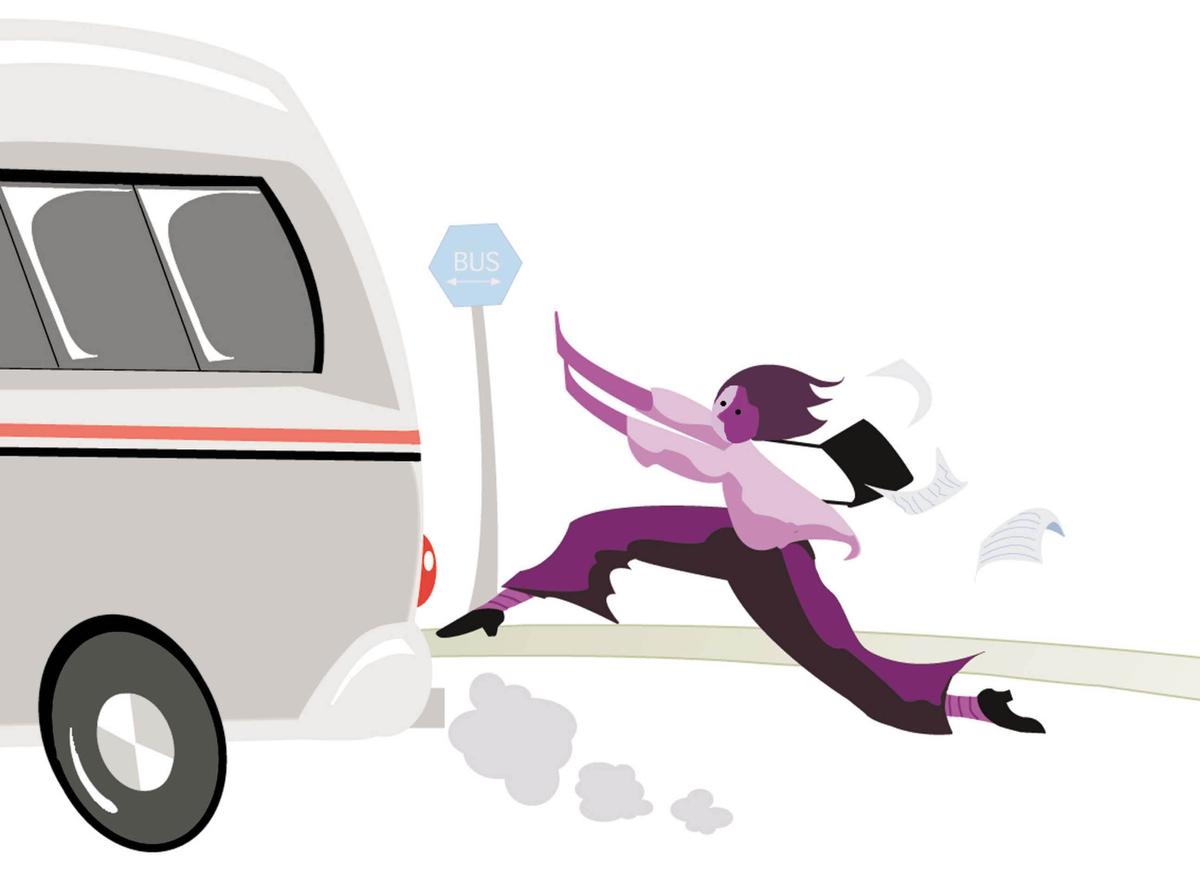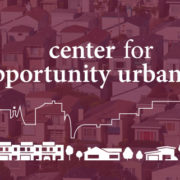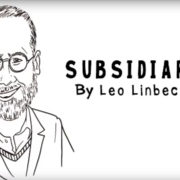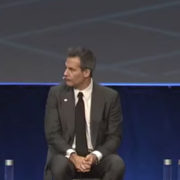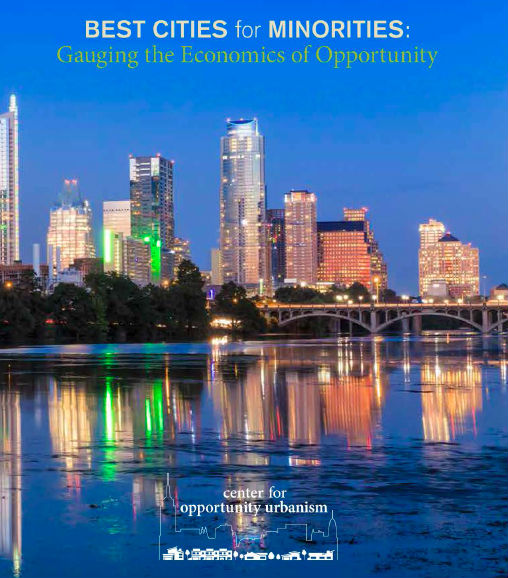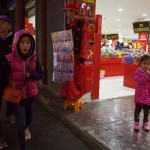How Commuters Get Railroaded by Cities
By Joel Kotkin
With more than $10 billion already invested, and much more on the way, some now believe that Los Angeles and Southern California are on the way to becoming, in progressive blogger Matt Yglesias’ term, “the next great transit city.” But there’s also reality, something that rarely impinges on debates about public policy in these ideologically driven times.
Let’s start with the numbers. If L.A. is supposedly becoming a more transit-oriented city, as boosters already suggest, a higher portion of people should be taking buses and trains. Yet, Los Angeles County – with its dense urbanization and ideal weather for walking and taking transit – has seen its share of transit commuting decline, as has the region overall.
Since 1980, before the start of subway and light-rail construction, the percentage of Angelenos taking transit has actually dropped, from 7.0 percent to 6.9 percent, while the region (including the Inland Empire and Ventura County) has seen the transit share drop from 5.1 percent to 4.7 percent. These reductions in ridership have been experienced both on the rail and bus lines.
The simple truth is that this region is just not structured to run largely on rails. We should not prioritize our transit dollars on trying to remake our region into something resembling New York, or even San Francisco, but in serving the needs, first and foremost, of those who remain dependent on public transit.
History and Legacy
The primary reason transit does not do well in Los Angeles is historical. Although Southern California arose with a strong transit base – the Pacific Electric Red Cars and the Los Angeles Transit Lines Yellow Cars – that structure began fading by the 1920s as private car use surged in the region. It’s also critical to recognize that the vast majority of Southern California’s growth – roughly 75 percent – came after World War II and also after the demise of the Red Cars.
Since early in the region’s development, our business and residential patterns reflect the dominance of automobiles, with numerous economic nodes and residential districts spread out in largely suburban communities. In terms of overall settlement patterns, only 10 percent of the L.A.-Orange County region – generally the area south of the Santa Monica Mountains and the San Bernardino (I-10) Freeway, north of Slauson Avenue and between Fairfax Avenue and the Long Beach (I-710) Freeway – can actually be considered urban in the traditional sense, with higher densities and a higher market share of work trips by transit.
Downtown connection
Critically, Southern California lacks a magnetic center, with Downtown Los Angeles accounting for barely 3 percent of all employment in the region. As population and jobs continue to concentrate in the periphery, we should be wary of building a transit system to serve a geography to which relatively few commute. Downtown L.A. may have revived as a destination and residential area, but not as a job center.
Strong downtowns are what make rail transit work. All cities with successful transit systems, notably New York, have powerful, magnetic downtowns. Manhattan’s business district accounts for 20 percent of all jobs in the region, many times L.A.’s rate.
New York commuters may depart from a host of locations but head generally to Manhattan, a critical business center back when Los Angeles was little more than a glorified cow town. Cars came on the scene fairly late in the urban evolution.
But New York is not duplicable, so much so that roughly two-fifths of all U.S. train commuters live in the New York City region. Nearly 85 percent of all the transit ridership increase nationally the past decade has taken place there.
Although none comes close to equaling New York, there are several “legacy” cities that have larger-than-usual concentrations of employment in their central cores. These also include cities – Washington, D.C., Boston, Philadelphia, Chicago and San Francisco – that developed before the rise of the car, although not nearly to the extent of Gotham. Together, these places account for 55 percent of all transit work-trip destinations in the nation.
As for the remaining cities that have built extensive systems, it’s not a pretty picture. Even those systems that tend to get the widest praise and positive media coverage have had very limited success. Before opening its massive light-rail system in 1990, 4.3 percent of Denver’s commuters rode transit to work. With lightrail, the share did rise – to 4.4 percent.
Even Portland, Ore., considered the mecca of “smart growth” strategy, actually has seen a decrease in its transit market share, from 7.9 percent before light rail to 6.4 percent in 2013. San Diego, arguably with one of the more successful light-rail systems, has seen its transit market share stagnate, from 3.3 percent in 1980 – before light rail – to 3.2 percent in 2013.
All Southern California’s Sunbelt rivals have done poorly in terms of transit share. Atlanta, which built its subway earlier than most, has seen its transit market share cut by more than half.
Or, take the Dallas light-rail system – DART – which serves growing Dallas and Collin counties, an extensive area where just 2 percent of metropolitan area employment is downtown. DART expanded its lines by approximately three quarters from 2000-14, but still lost commuting market share.
The story is similar in Houston, where the light-rail system opened in 2004. From 2003-14, the population in Harris County, which includes Houston, grew 23 percent, but transit ridership decreased 12 percent, according to American Public Transportation Association data. This means that the average Houstonian took 30 percent fewer trips on the combined bus and light-rail system in 2014 than on the bus-only system in 2003.
Finally, in each of these cities, driving alone has increased, and all of them, most recently the Los Angeles region, now have more people working at home than riding transit to work. Commuting time is a big reason. Few transit trips in most cities take less time, door-to-door, than traveling by car, not to mention the convenience of working at home. The average transit rider in Los Angeles spends 48 minutes getting to work, compared with 27 minutes for people driving alone.
21st century transit
In the future, we need to focus on the people, largely poor, who should benefit most from transit investment. Transit commuters in the Los Angeles metropolitan area earn approximately 60 percent less than those in the six metropolitan areas with legacy cities.
These people should be the primary concern of transit agencies. But in the planning drive to re-engineer Southern California by building much more expensive rail systems, bus lines have been cut back, which also has occurred in many other cities embracing new train systems. As one former transit agency head recently explained, in confidence, this is part of a strategy to promote high-density real estate investment along transit routes. Trains, he explained, also can attract a more affluent rider, who could also easily drive to work.
Perhaps rather than trying to recreate the transit city of the early 20th century, planners should seek solutions that make sense in the dispersed environment of this century. Ideas that promote underinvestment in roads, supposedly to encourage transit use, are akin to inflicting cruel and unusual punishment on motorists. In Los Angeles, with the nation’s second-worst roads (the Bay Area is doing even worse), this translates to more than $1,000 in annual repair and maintenance costs per typical driver.
This cost particularly affects poorer populations, who tend to have older cars and have to steer through the most congested areas. L.A. Councilman Gil Cedillo, a longtime labor activist, made this point while objecting to Mayor Eric Garcetti’s gambit to expand bike lanes, reduce vehicle lanes and not invest in adding road capacity. Cedillo claims this “elitist” plan would hurt his constituents, few of whom would be using bike lanes to get to work, by assuring continual gridlock.
Rather than underspending in our road networks, perhaps more attention might be paid to making them work better for transit commuters. Rapid transit by bus could certainly be cheaper. But we also could explore using Uber-like door-to-door ride-booking services more often, with perhaps subsidies for poor riders. Such a step, or even making cars more accessible for these low-end commuters, would greatly expand the range of jobs and locations available to them. Vehicles could be bought by low-end commuters if they looked for some used cars for sale online, or in their local area. These cars are second hand, meaning they are discounted. This could make them more accessible for people struggling to find money to purchase a brand new car, meaning they could expand the area they’re looking for jobs in.
Further in the future, we might see the influence of autonomous, self-driving taxis and buses, which could be much cheaper, more reliable and less traffic-snarling than their current iterations.
Rather than commit our region to ever more expensive transit systems, we need to focus primarily on serving the transit-dependent population as efficiently as possible while looking to improve transportation outcomes on the vast majority of people who are likely to remain behind the wheel.
Joel Kotkin is the R.C. Hobbs Fellow in Urban Studies at Chapman University in Orange and executive director of the Houston-based Center for Opportunity Urbanism.
Wendell Cox, also a fellow at COU, is principal of Demographia, a St. Louis-based public policy firm, and was appointed to three terms on the Los Angeles County Transportation Commission.
This article was originally published by the Orange County Register on 11/1/2015

